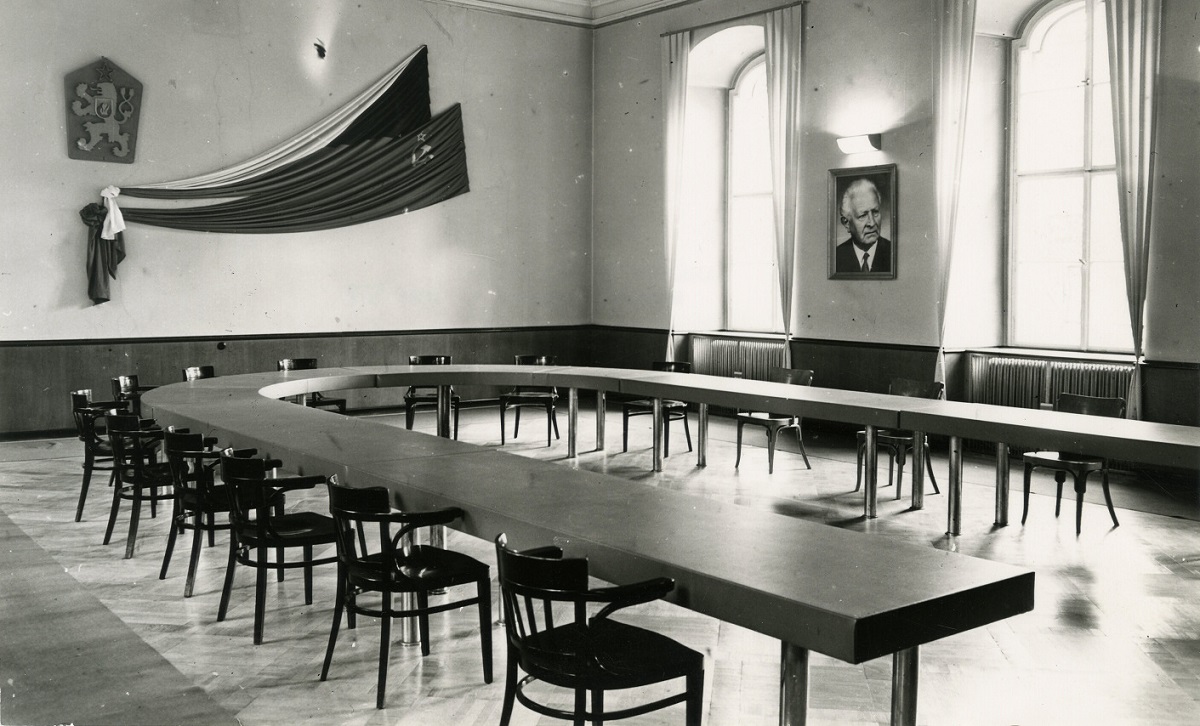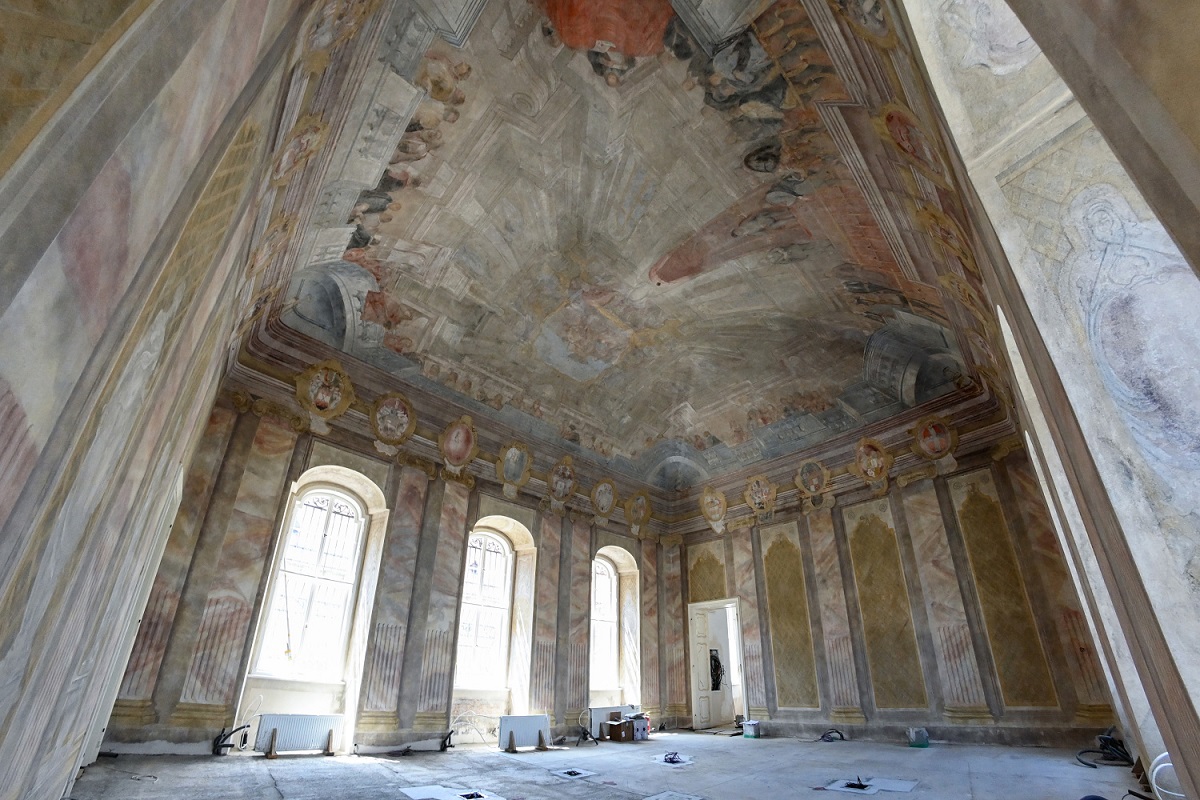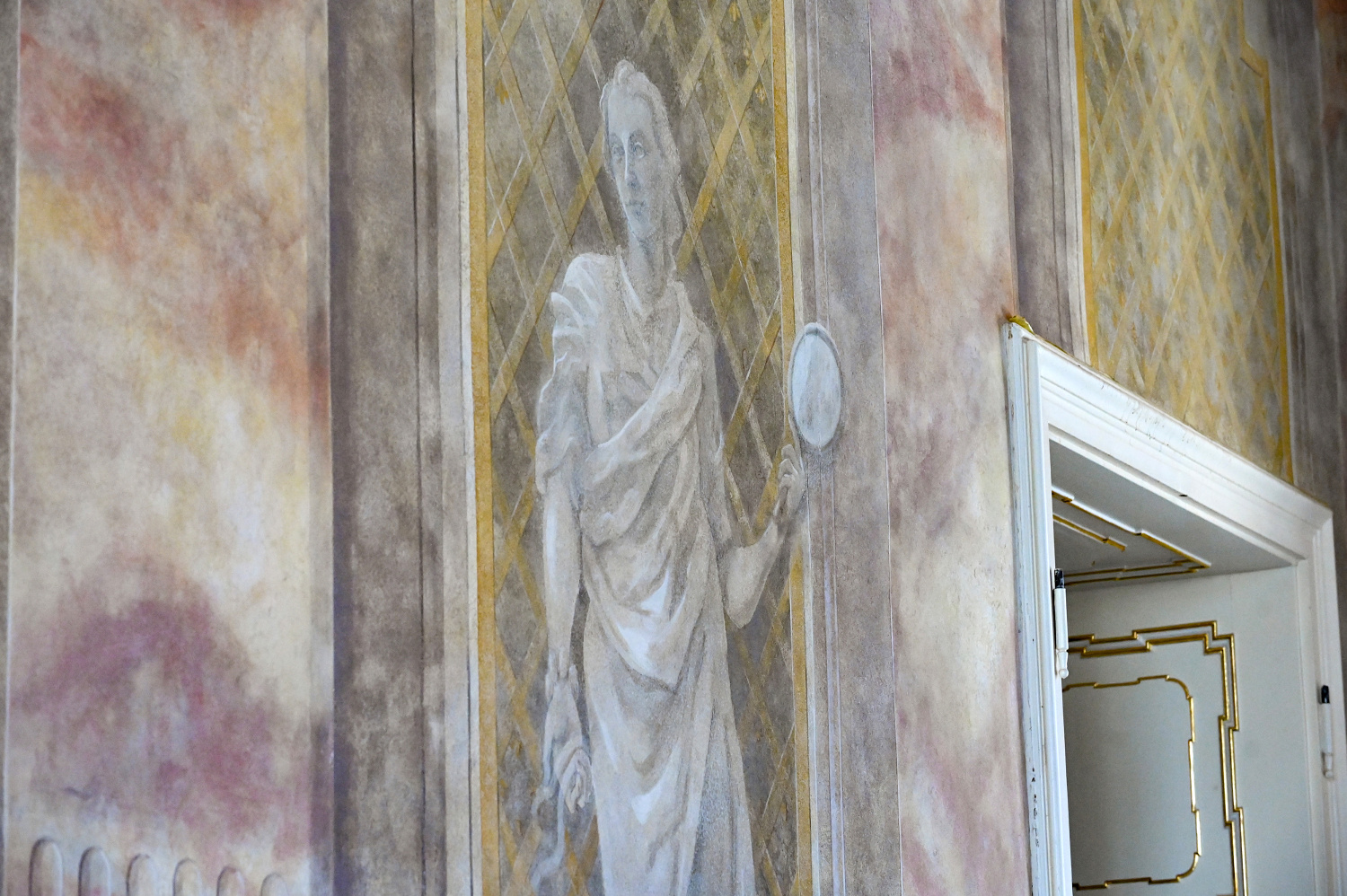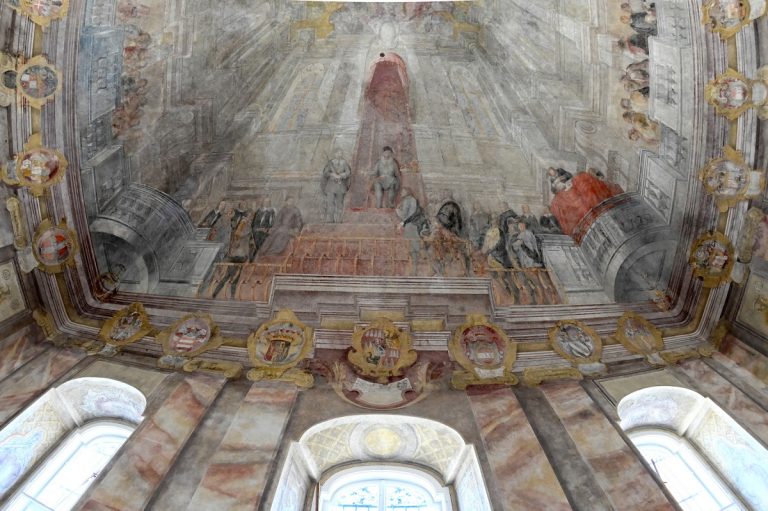Reconstruction work began almost two years ago on Brno’s New Town Hall, to restore its former Baroque appearance and, at the same time, equip it for operation in the 21st century. The restoration team led by Martin Číhalík has also reconstructed some of the original fresco work, solving some mysteries concerning the painting and its author in the process. Photo Credit: Marie Schmerková / MMB.
Brno, June 7 (BD) – In the first half of the 18th century, the New Town Hall was used as a court, and about half a century later, in the 1880s, it was occupied by the army, before being put to various uses, including as a people’s soup kitchen. This process resulted in significant damage to some of the original decorative frescoes in the building, until at the end of the 19th century it was decided to cover them up with other paintings or with stucco.

Photo: New Town Hall in the 20th century. Credit: MMB Archive.
“No one has seen the fresco since. It was known that they were here, but not what they represented”, said Martin Číhalík, the coordinator and leader of the restoration team.
The unveiling of the ceiling frescoes, which began in the summer of 2019, revealed that they were in very poor condition. The restoration work has therefore included the retouching of the base of the fresco.

Photo: Baroque frescos revealed during restoration in the New Town Hall. Credit: Marie Schmerková / MMB.
“In later completely unsatisfactory conditions, the fresco lost the last adjustments, made only in dry plaster, i.e. all the finesse, lights, contours. It all disappeared. The viewer at that time never saw it that way,” said Číhalík.
The original project to restore the Baroque appearance of the Town Hall only included the ceiling frescoes, which had been at least partially restored, but not the wall paintings, which were considered too poorly preserved to be saved. However, based on two photographs by Mořic Trapp, a Moravian historian, photographer, and draftsman, the restorers have endeavoured to reconstruct the illusory decoration consisting of a ledge with the judges’ coats of arms, columns as if carrying a vault and statues of two virtues – Justice and Prudence. Although the photograph shows the veil and the knee of the third “niche” between the illusory columns, it
remained empty. As Číhalík explained, there are four allegorical virtues: Fortitude, Justice, Prudence and Temperance, and from those segments it is difficult to say which virtue the author chose for the courtroom.

Photo: Baroque painting revealed during restoration in the New Town Hall. Credit: Marie Schmerková / MMB.
The previously undetermined authorship is now attributed to František Řehoř Ignác Eckstein, based on evidence including the time of its origin, indications in its correspondence, and the style of his decoration at the Milotice chateau. However, it remains a challenge to determine exactly what the scene on the ceiling is.
“According to Trapp’s description, we assumed that it would be an event from the 18th century, but all the figures are dressed in the Spanish fashion. This means that we are moving about a hundred years earlier,” said Číhalík.
The New Town Hall is now entering the next phase of reconstruction to equip it for operation in the 21st century. The City of Brno has invested over CZK 25 million into the work, which is set to be completed in November this year.
[Best_Wordpress_Gallery id=”372″ gal_title=”Restoration Of New Town Hall”]Photos: Restoration process. Credit: Marie Schmerková / MMB.








